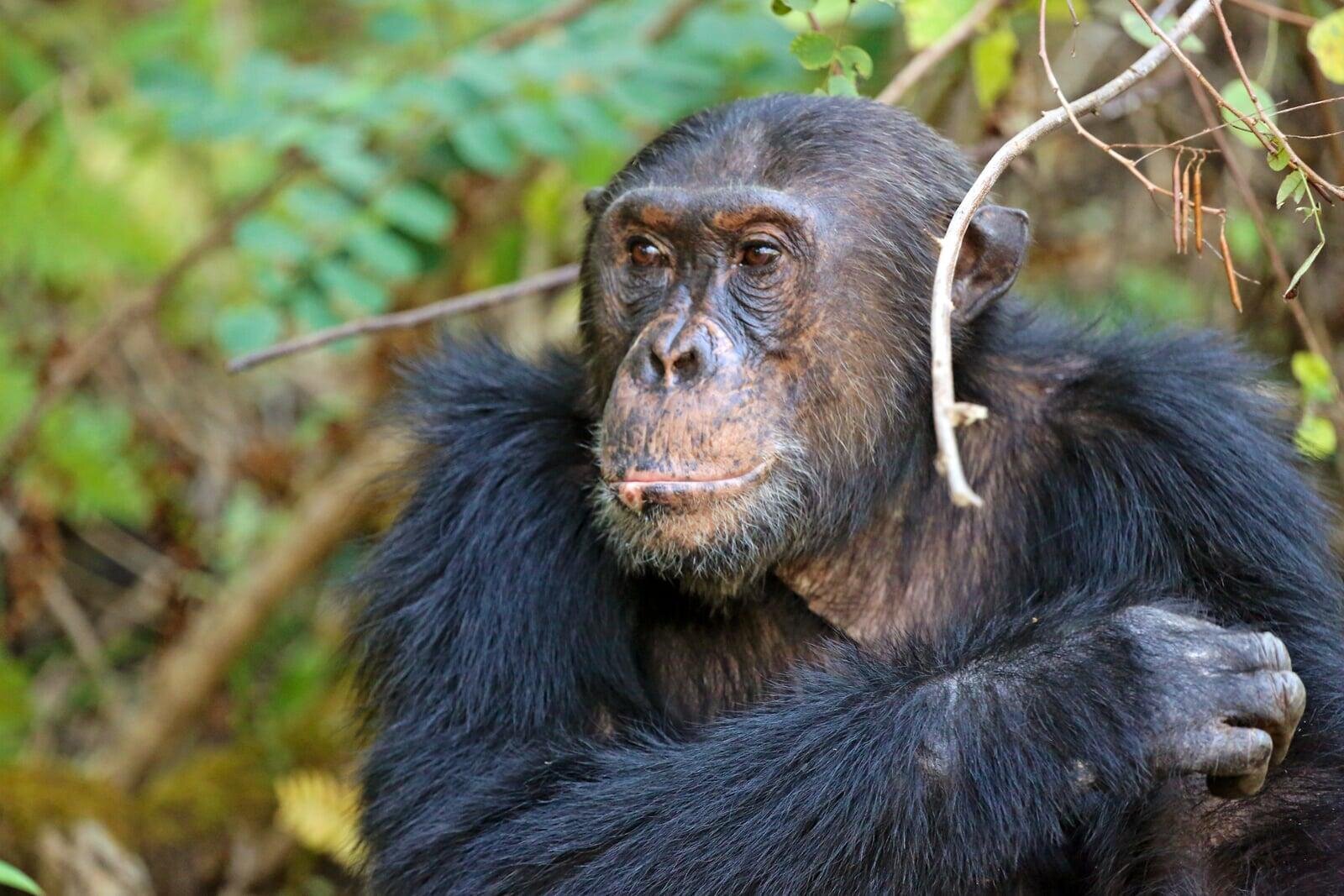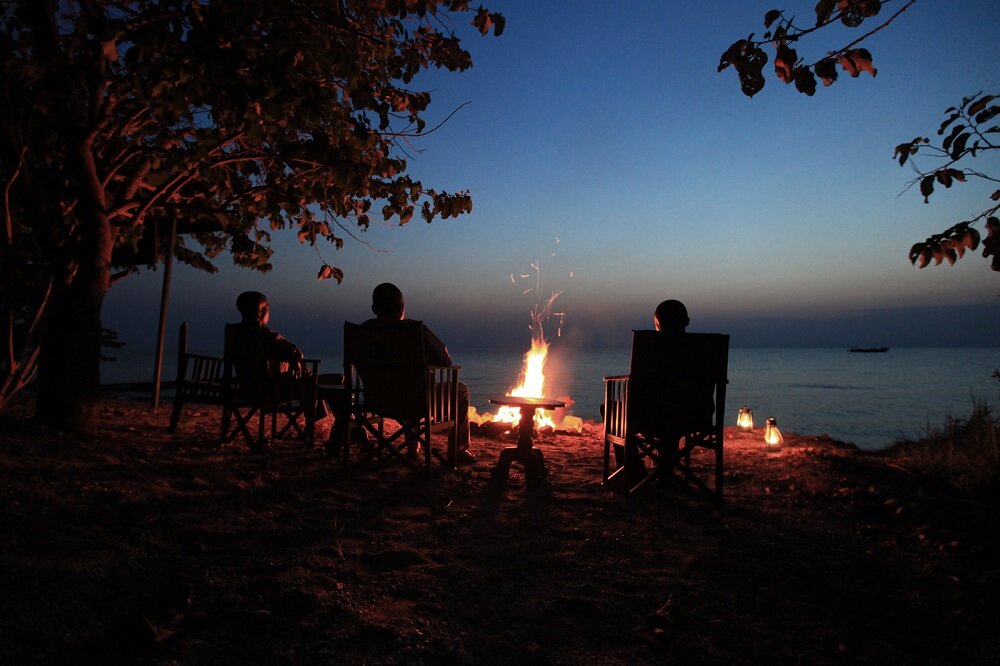Start Planning Your Gombe Safari
The smallest of Tanzania’s national parks, Gombe Stream National Park is a narrow strip of chimpanzee habitat on the shore of Lake Tanganyika, located on the far western border of Tanzania and the Congo. The park is world-famous for Jane Goodall, the resident primatologist who spent many years in its forests studying the behaviour of the endangered chimpanzees, contributing to the drive to combine the preservation of primate wildlife habitats with the development of eco-tourism and the beneficial involvement of indigenous human communities in Tanzania.
Gombe National Park was established in 1968. It is located on the eastern shore of Lake Tanganyika, 15 km north of the town of Kigoma, and is accessible only by boat. The landscape of the park is made up of steep valleys, streams and rivers. The vegetation changes from tropical rainforests and alpine bamboo to grasslands – similar to that of neighboring Mahale Mountains National Park.
The park is rich in both human and natural history. The village of Ujiji is where historians think British researcher H.M. Stanley said the famous words “Dr. Livingstone, I presume?” in 1871 when he encountered fellow adventurer David Livingstone, who had been thought to have died. Though he was seriously ill, Livingstone convinced Stanley to join him on a search to find the source of the Nile — a quest which took them through the Gombe Valley.
The park’s narrow, steep valleys are carpeted by evergreen rainforests that give way to grass-topped ridges and alpine bamboo stands, are home to two kinds of acrobatic colobus monkeys, along with giant kingfishers, crowned eagles, bushpigs, trumpeter hornbills, and more than 50 other wild species. Snorkelers may enjoy the adjoining lake, which holds almost 100 kinds of brightly-colored cichlid fish.
Chimpanzees of Gombe
Tracking the chimps is a fascinating experience. When Jane Goodall arrived in 1960, Tanzania’s Gombe Stream National Park was just one piece of forest amidst a vast ocean of trees. Today, it’s a small green island engulfed by farms, fields, and villages. Despite the change, this tiny park (a mere 30 square miles) is still one of the best places in the world to see wild chimpanzees in their natural habitat. During her research time at Gombe, Goodall made many new discoveries about chimpanzees, detailing their social hierarchy, their calls and previously unsuspected behavior.
Less than 150 chimpanzees live in the Park. The exact number of chimpanzees is unclear since no census has been conducted. Ongoing studies and analyses examine mother-infant relations, vocal communications, and botanical collections. Fifi, the last surviving member of the original community, and its matriarch, was only three years old when Jane Goodall first arrived in Gombe, and she is still regularly seen by visitors. There is ongoing field research and Gombe Stream Research Center (GSRC) also takes a role in conservation education. Both research and education play important roles in preserving free-living chimpanzees and their habitats.
Before Dr. Goodall could watch the Gombe chimpanzees, much time was spent getting them used to human observers. From 1962-1965, she used random provisioning to get the chimps used to the presence of humans. These observations have found distinct patterns of behavior in the different communities of chimpanzees. The chimpanzees of Gombe have three unique patterns and are also known to share 13 behavioral patterns with other chimpanzees. Some shared patterns are: "termite-fish using non-leaf materials," "lever open" (stick used to enlarge an entrance), "self-tickle" (tickle self, using objects), and "Rain dance" (slow display at the start of rain). Some unique patterns are: "leaf squash" (squash bug on leaf) and "ant-dip-wipe" (manually wipe ants off wand).
*Please note: The minimum participating age for chimpanzee trekking as determined by TANAPA is 15 years old. So Gombe can only be part of your family safari in Tanzania if you have older teenagers.
Activities on your Gombe Safari
The main attraction of Gombe Stream is clearly the families of chimpanzee that live protected within the park’s boundaries. Guided walks that take visitors deep into the forest to observe and sit with the extraordinary primates for an entire morning are available — one that is the highlight of many visitors’ trips to Africa and an incredible experience. Besides chimpanzees, other primates living within Gombe Stream include beachcomber olive baboons, red-tailed monkeys, blue monkeys, red colobus, and vervet monkeys. Blue monkeys and red-tailed monkeys have also been known to hybridize in the area. There are occasional hippopotami, leopards, and 11 species of snakes. The park is also home to bush pigs and over 200 bird species.
However, Lake Tanganyika is also a wonderful place to go snorkeling and swimming, fishing, sailing or just relax on the white sand. Hippos and crocodiles tend to keep their distance from Gombe which means visitors can take a dip in the lake without having to worry about sharing the water with wild animals.
While at Gombe, a visit to the Goodall Foundation’s old feeding station should be on the list of things to do and the nearby village of Ujiji is where Henry Stanley met Dr Livingstone in 1871.
How to Get to Gombe National Park
Travelers can take a domestic flight to Kigoma airstrip from where they will take a boat ride to reach the national park. There are flights from Dar es Salaam (daily) or a shared charter flight from Arusha that flies twice a week. Set aside at least 4 days (1 to get there, 1 to return and at least 2 full days actually in the park). You can add Gombe to our range of Tanzania safari holidays, but it will take up the lion’s share of most trips. Given how special the chimpanzee population is here, many consider this more than worth it.
When to Visit Gombe
Gombe is best visited during the dry season, which stretches from June to October. In the dry season there is very little rain or none at all, with plenty of sunshine, although later in the year a fine haze can impede viewing conditions. There are few mosquitoes about, especially during the day. Chimps generally stay on the lower slopes during the dry period and are easier to find. Sometimes they can even be seen close to the camps or wandering along the sandy shore. In intermediate periods, conditions are widely variable but generally tolerable and well worthwhile because of other incentives.
From November to April the wet season causes problems due to rain. Access is difficult and the trekking is slippery. During the months of March and April lodges and accommodations close for maintenance.
Visits during off-season don’t offer much financial advantage. Travel is expensive and the logistical costs increase as access becomes more difficult. The Gombe park fee is the same year-round and it’s almost twice the cost of other parks in Tanzania such as Serengeti, Ngorongoro, Tarangire, Manyara etc.
Accommodations in Gombe
In Gombe Stream National Park, there are no luxurious top of the range, primate-focused lodges. Mbali Mbali Gombe offers a small, uniquely personalized base for your African primate travel experience in a beautiful setting between lake shore and mountain, with comfortable and spacious accommodations that combine the airy comfort of safari tents with the permanence of solid-timbered decking and thatched roofs. Since Mbali Mbali Gombe is the only proper tourist-focused primate accommodations, it tends to book up months and even a year in advance in the peak season, particularly for groups of more than two travelers. However, there is never a crowding problem at Gombe as there are rarely more than 15-25 tourist visitors at a time in the entire park.
In stark contrast, if you are looking for inexpensive accommodations in Gombe, you’ll be left to your own devices at the TANAPA-owned Gombe Bandas, the only backpacker hostel-like option available, which offers very basic and questionable accommodations, with shared toilets and showers plus limited ethnic canteen food.
It takes a great deal of effort and money to go on a chimpanzee safari in Tanzania, but if you go, it’s something you’ll never forget or regret. As Jane Goodall explained in her research, books and talks, the time she spent with the chimps ( who, as mankind’s nearest cousin share 98% of our genetic coding), enriched both her personal life, her understanding of our own behavior and our place in the natural world among a wider, boundless universe.
If you’d like to start planning your Gombe safari tour, please don’t hesitate to get in touch. We will happily create a bespoke itinerary to meet your wishes and requirements. What are you waiting for? Your Gombe National Park tour awaits!













